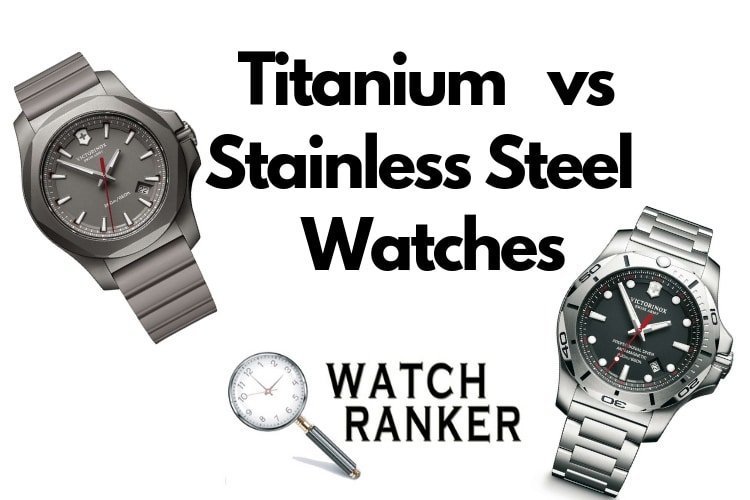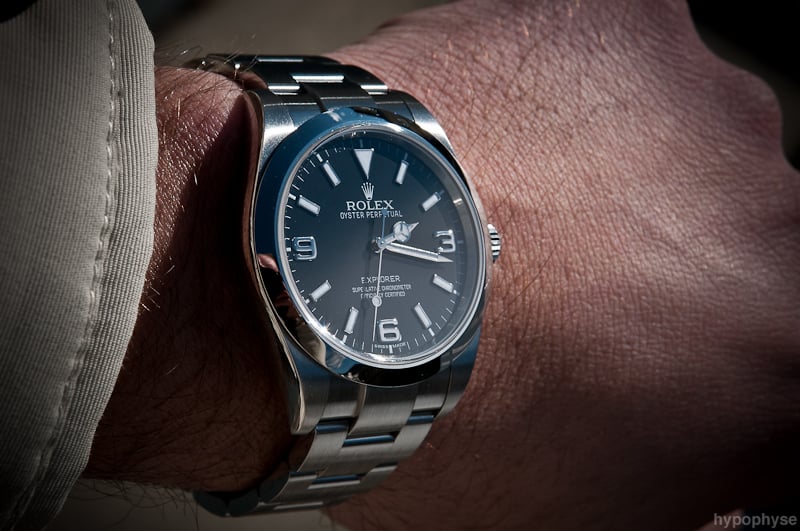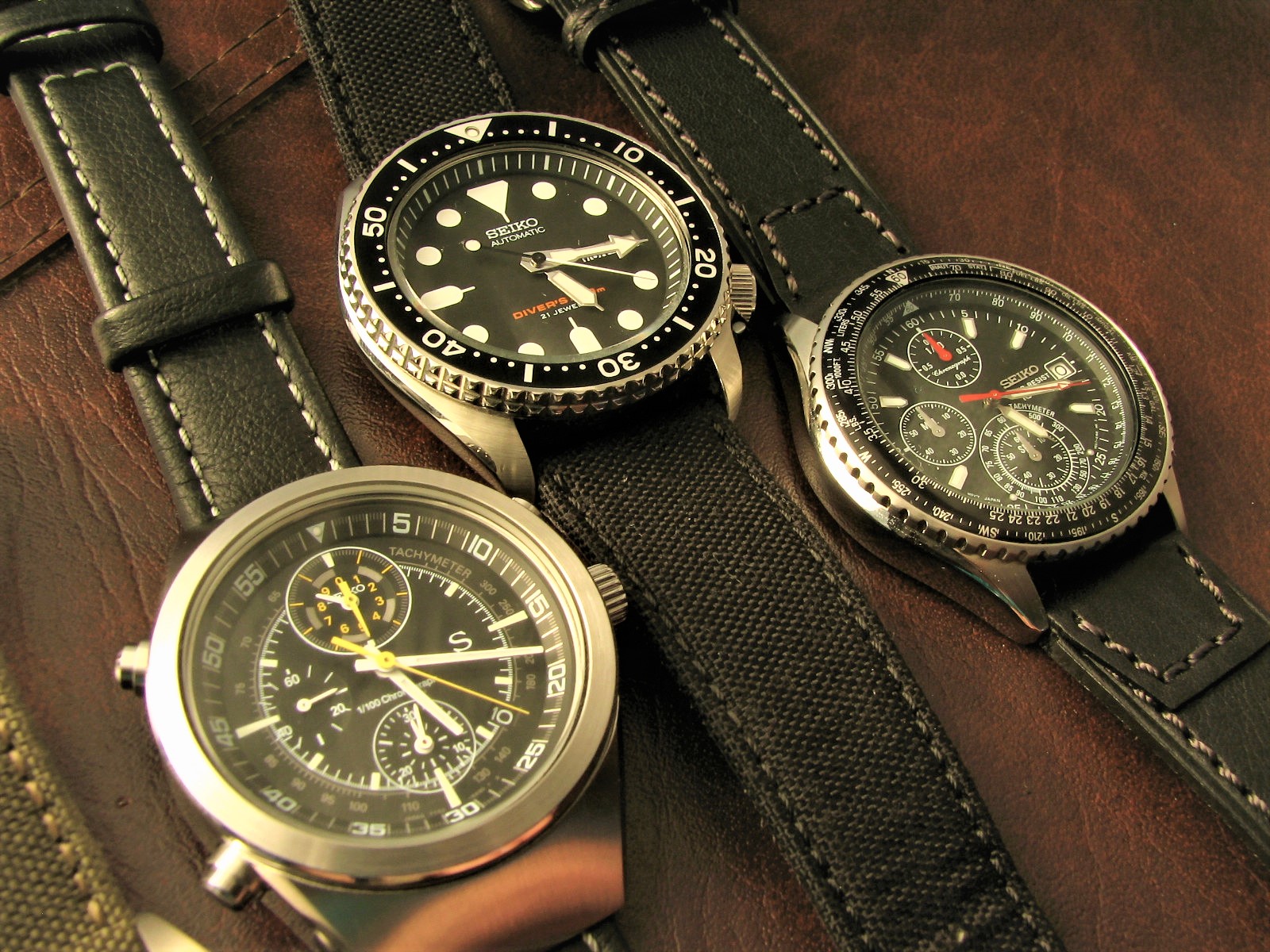When you shop for watches, you’ll frequently see cases and bands made out of stainless steel. Of course, many watch straps are leather, cloth, or any number of other materials, but for the case, stainless steel is usually your best bet. This is because stainless steel doesn’t rust and is remarkably strong, especially for the purposes of wristwear.
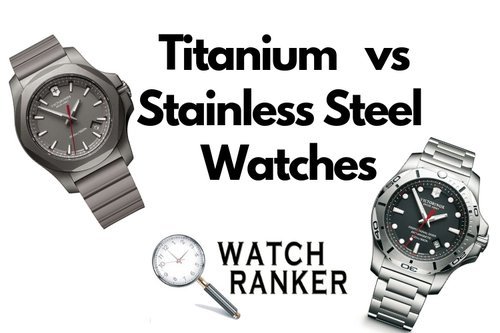
In recent years, stainless steel’s dominance in the arena of wristwatches has started to be challenged by an even stronger metal: titanium.
Used in aeronautical and astronautical designs, titanium is one of the toughest and most abundant minerals on earth. Equally important in terms of design, though, is its lightness.
For the discerning watch buyer, choosing between a stainless steel or titanium watch can come down to a number of factors. We’re here to break those factors down for you.
Table of Contents
Titanium vs Stainless Steel: Price
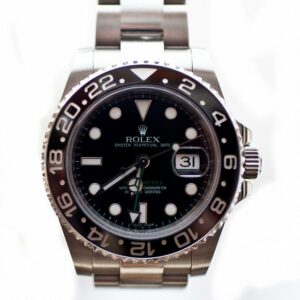
Let’s get this one out of the way first, because for most people price will be the ultimate deciding factor. The primary disadvantage of titanium watches is price.
No matter the relative qualities and advantages of the material, for many people, titanium’s higher price tag will be the only thing they see.
Stainless steel is a cheaper material than titanium, which means, all other things being equal, a watch made of stainless steel will generally cost less. Of course, stainless steel is a fairly broad term, so some steel-made watches (like the Oystersteel Submariner by Rolex) are priced high.
In general, titanium is more expensive than stainless steel, and their respective watches reflect that difference. If you have other concerns besides your bank account, though, the next four factors should help you make your decision. However, there are more affordable titanium watches.
See our list of the best titanium watches here or our picks for best stainless steel watches here.
Titanium vs Stainless Steel: Strength
Stainless steel is strong.
The G-Shock line of watches by Casio, known for their industry-leading durability, has a whole line of G-shock watches made of stainless steel (click to see on Amazon).
Stainless-steel watches will usually take a beating and still perform like new. They are relatively scratch-resistant, as well (although, by no means impervious).

And yet, when comparing the two materials, it’s not even close. Titanium has three times the strength of steel.
There’s a reason that titanium is used in the construction of aircraft that have to withstand some of the most brutal forces nature can throw at it, whether within or outside the earth’s atmosphere. Superman should have been called the “Man of Titanium” if they really wanted to show how strong he was.
For the majority of watch owners, the kind of toughness that titanium provides may never be required. Stainless steel will get the job done. If strength is the deciding factor for you, then there really is no contest. Titanium wins, hands down.
Titanium vs Stainless Steel: Weight
Considering its increased strength, it might surprise some readers to learn that titanium is also considerably lighter than stainless steel.
This is another factor that has led to the widespread use of titanium in aerospace designs. A super strong material that doesn’t weigh you down is invaluable in the design of air- or space-bound vehicles. It’s also pretty nice on a watch, too.
Click here to see the watches that astronauts have worn into space.
The weight of titanium on a watch will be most notable in watches that have a bulkier design. Take, for instance, this Citizen Eco-Drive Perpetual Chrono.

The shipping weight is 11.2 ounces, yet the stainless-steel version of a very similar watch comes in at 15.2 ounces. A difference of four ounces might not seem like much, but on your wrist, that weight will be very noticeable when it comes to comfort.
Titanium vs Stainless Steel: Allergy
For many people, stainless steel watches can be an issue because of the nickel often found in the metal.
As I’ve written about before, many people are allergic to nickel, which leads to rashes and discomfort when wearing a watch.
There are hypoallergic stainless-steel watches out there, but when anyone with an allergy to nickel shops for a watch they have to be careful.
See some our list of nickel-free watches here.
By contrast, titanium is naturally hypoallergic because of the naturally occurring oxide layer that covers the metal.
This layer is beneficial for watchmaking for two reasons. One, it prevents titanium from rusting, and two, it keeps the metal from interacting with human skin, which is what causes allergic reactions.
For this reason, people whose skin does not react well to stainless steel (myself included) can seek out titanium as an alternative.
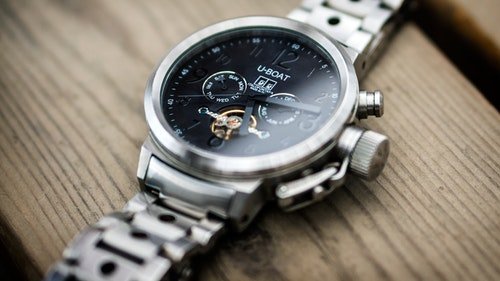
Titanium vs Stainless Steel: Look
The final comparison point is the most subjective. Stainless steel has a decidedly shinier look than titanium. This is one of the reasons that stainless steel is so popular in jewelry because its natural shimmer offers a clean, glowing accompaniment to any jewels or precious stones. On a watch, it helps maintain a new and crisp look, even if the timepiece is many years old.
For some people, the more muted façade of titanium will be a draw. Stainless steel is often used as a stand-in for platinum, itself a strong, expensive chemical element. But platinum can be gaudy at times, and titanium’s dimmer appearance can make for a classier, more subdued look. There’s obviously no right or wrong here, just personal taste, but there is a definite difference, and one to keep in mind when on the hunt for a new timepiece.
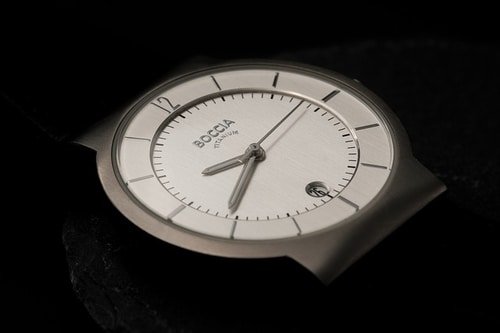
Titanium vs Stainless Steel: Final Verdict
Declaring a winner in these sorts of comparisons is basically impossible. So much comes down to personal taste and financial investment. The best I can do is acknowledge the comparative merits.
By my count, titanium wins in three categories – Strength, Weight, and Allergy – while stainless steel only flat out wins in terms of Price (again, “Look” is too subjective to declare a winner). For many casual shoppers, Price is all that matters, but watch aficionados generally care about many factors.
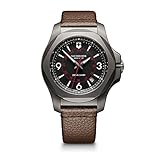
If you’re willing to pay a little more, I would recommend a titanium watch. Take, for instance, a personal favorite, the Victorinox Swiss Army I.N.O.X. Titanium. It’s an absolutely beautiful Swiss timepiece.
Everything from the titanium case to the durable leather straps has been tested to ensure this watch can resist pretty much anything you throw at it, and look good doing it. that watch isn’t exactly what you’re looking for but are looking for a titanium option, you may want to see our picks for Best Titanium Watches For Men & Women.
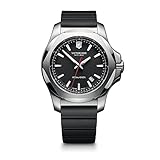
The sibling version – the Stainless Steel I.N.O.X. has plenty of charm, too, though, so whatever your preference, there’s something for everyone.
Unless you’re looking for a watch made out of wood, then your options dwindle a bit.

